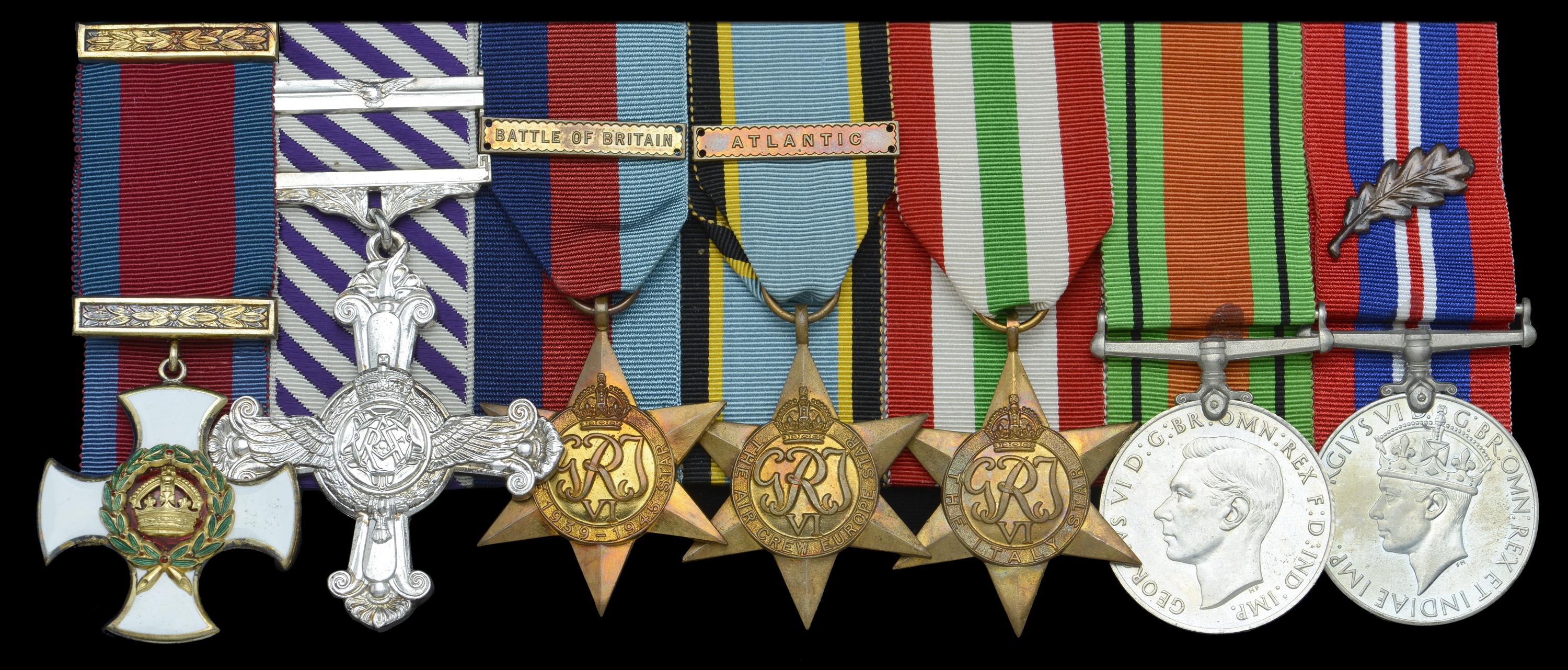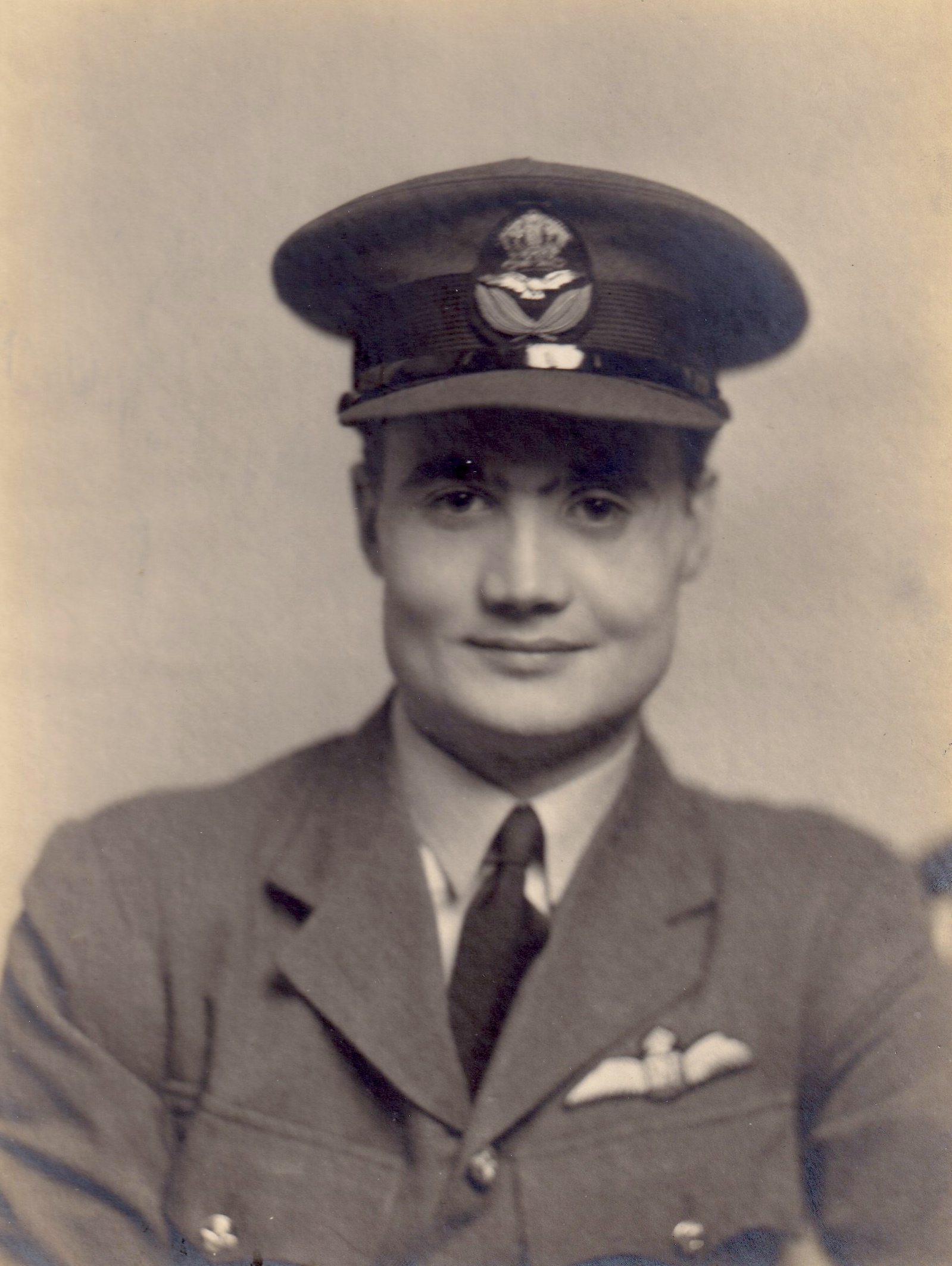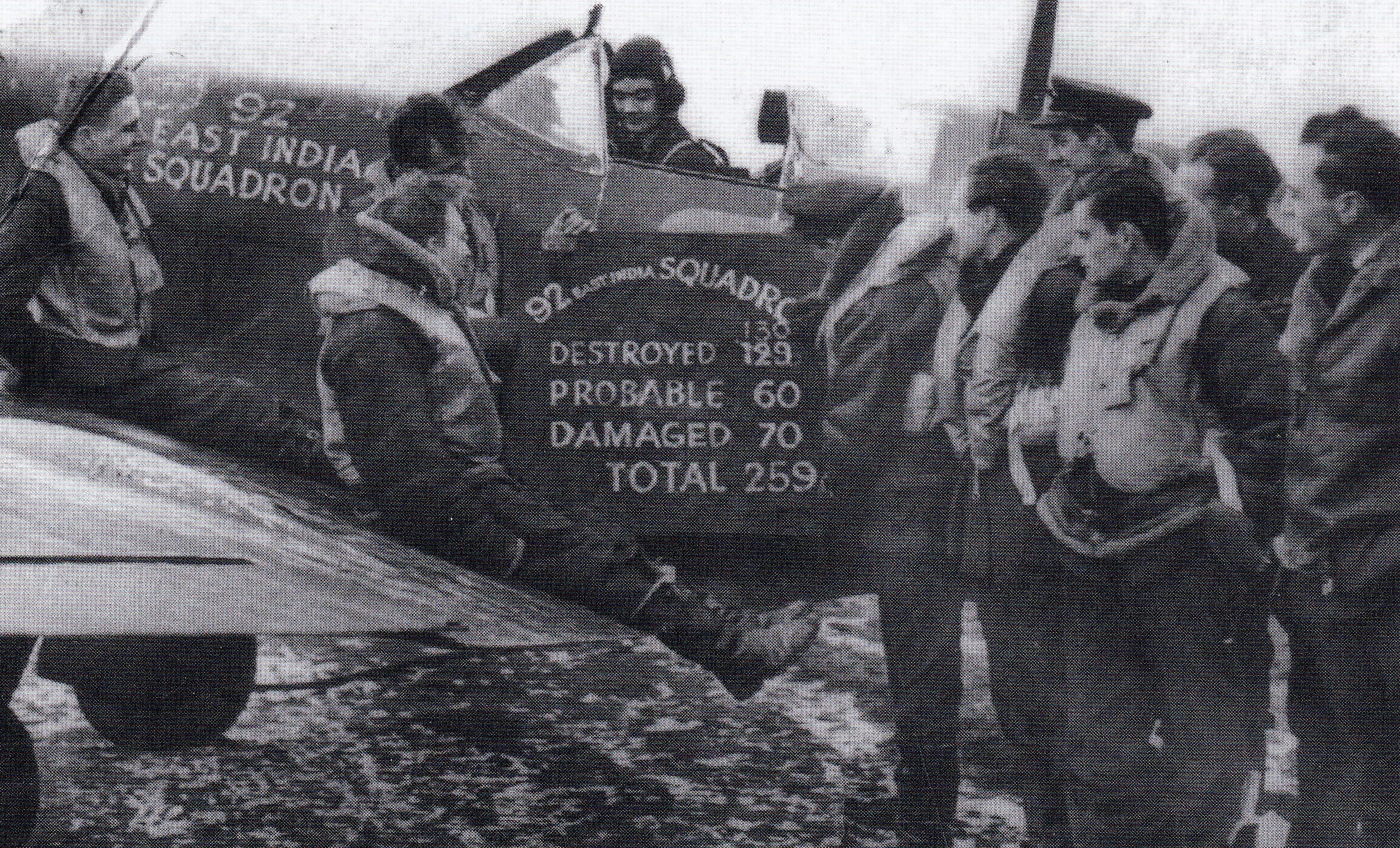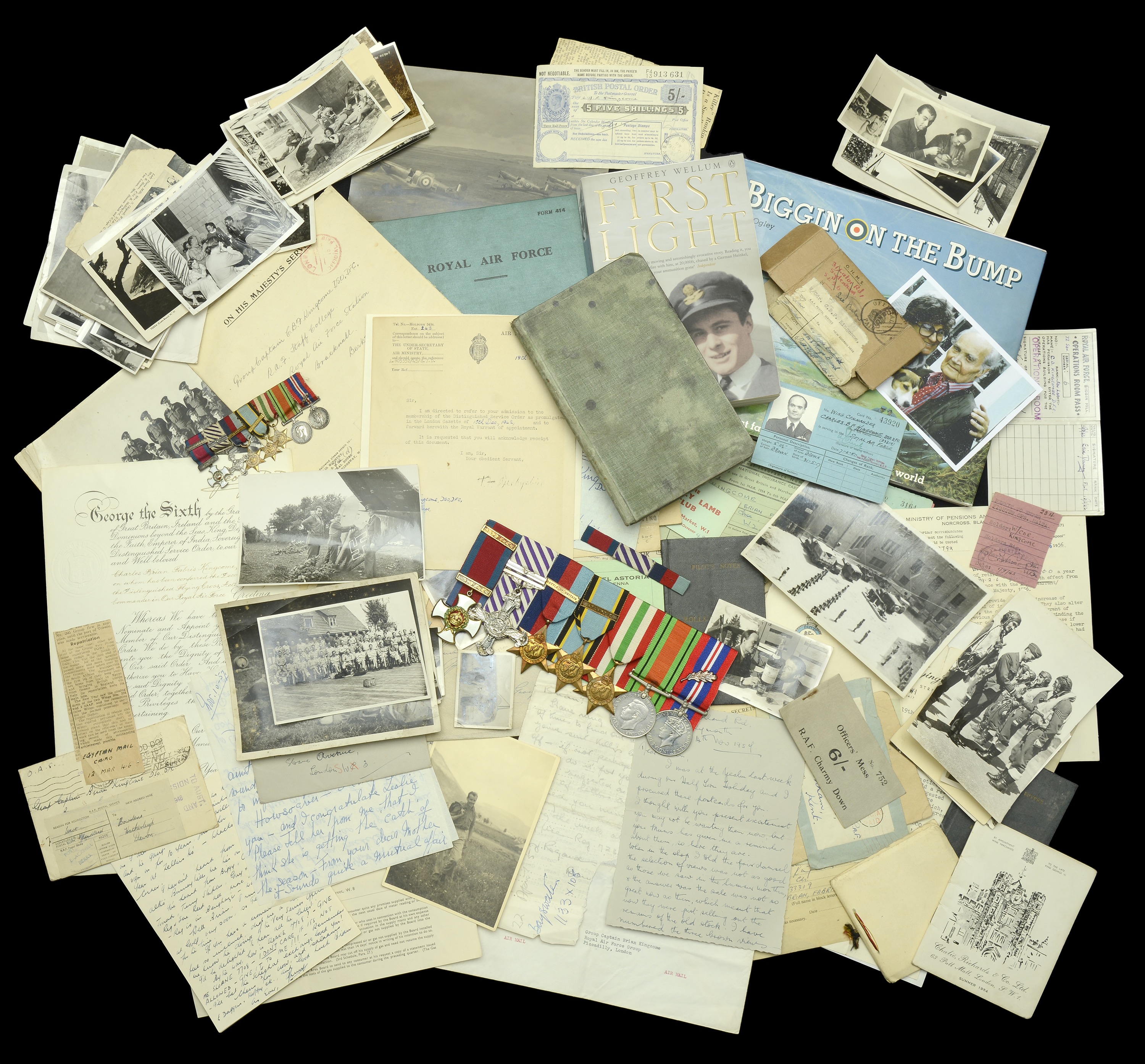‘The surge of adrenalin, the half dozen or so pilots, that were all we could normally muster, sprinting to their aircraft, the tiredness and the hangovers disappearing as though they had never been, the flat-out climb to 20,000ft, the mud on our flying boots freezing fast to our rudder bars in our unheated and unpressurised cockpits, the long shallow tension-building dive south to meet the enemy, sometimes seeing the sun lift over the horizon from 20,000ft and again, after landing, on the still darkened earth. The day only just begun and already behind us the savage, lethal action, death for some, and for those safely back on the ground the memory of two sunrises in one morning and thoughts quickly suppressed of friends not yet accounted for. And life, at least until the next telephone call. Adrenaline-filled life. One sustained electrifying high.’ The recipient’s own memories of his time at Biggin Hill during the Battle of Britain. The important Second War 1942 ‘fighter operations’ D.S.O., 1940 Immediate ‘Battle of Britain’ D.F.C. and 1941 Second Award Bar group of seven awarded to Spitfire ace, Group Captain C. B. F. Kingcome, Royal Air Force, one of the outstanding characters of the Battle of Britain, who, during its height, led 92 Squadron with great success from Biggin Hill. Shot down and hospitalised in October 1940, he returned to fly with the squadron until appointed to the command of 72 Squadron, February 1942, leading them as the fighter escort of Esmonde V.C.’s Swordfish detachment for their ill-fated ‘Channel Dash’ action. One of the youngest Group Captains in the R.A.F., aged 25, he commanded 244 (Spitfire) Wing, Desert Air Force, providing fighter support For the Eighth Army from Africa into Sicily and then through the campaign in Italy. His D.S.O. citation stating ‘He has destroyed a total of 11 enemy aircraft, probably destroyed 5 and damaged 13. His claims are traditionally modest...’ Distinguished Service Order, G.VI.R., silver-gilt and enamel, reverse officially dated ‘1942’, with integral top riband bar; Distinguished Flying Cross, G.VI.R., reverse officially dated ‘1940’, with Second Award Bar, reverse of Bar officially dated ‘1941’; 1939-45 Star, 1 clasp, Battle of Britain; Air Crew Europe Star, 1 clasp, Atlantic; Italy Star; Defence and War Medals 1939-45, with M.I.D. oak leaf; together with the recipient’s related miniature awards, these mounted for wear; and riband bar for first three awards, generally very fine or better (7) £30,000-£40,000 --- Provenance: Bentley Priory Auction, Spink, September 2012, when sold by the recipient’s widow. D.S.O. London Gazette 15 December 1942. The original recommendation states: ‘Wing Commander Kingcome has lead the Kenley Wing on 22 offensive sweeps; including the Battle of Dieppe. He has made a total of 357 operational sorties, 207 of which were offensive sweeps, and has flown 535 operational hours. He has destroyed a total of 11 enemy aircraft, probably destroyed 5 and damaged 13. His claims are traditionally modest. Throughout the period of his command of this Wing, his coolness and ability in action - coupled with his natural powers of leadership has proved a great inspiration to the Squadrons. He is practically the last operational pilot of his ‘vintage’ and has displayed tremendous resolution and athleticism to remain on operations so long.’ D.F.C. London Gazette 25 December 1940. The original recommendation states: ‘This officer has led his flight and during the last week, the squadron, with judgement and a really good offensive spirit. He has personally destroyed 6 enemy aircraft and probably 4 more, and by his leading has been responsible for the destruction of many others. He has infected the pilots he has led with his own determination and confidence and proved himself a most able Flight Commander.’ D.F.C. Second Award Bar London Gazette 29 July 1941. The original recommendation states: ‘This officer who received his D.F.C. last October at the time had 5 enemy a/c destroyed and probably 4 more. He has now increased his score to 10 destroyed 4 probably destroyed and 10 damaged, and during the past 9 months has on many occasions led the squadron with distinction. At all times he has shown real determination, judgement and courage and has set a very high standard to the other pilots which has reflected itself in the achievements of his squadron.’ Charles Brian Fabris Kingcome was born in Calcutta, India in 1917 and educated at Bedford School. He entered the R.A.F. College, Cranwell in January 1936 but soon after beginning his pilot training he was seriously injured in a car accident and told he would never fly again due to permanent double-vision. Despite this setback, after six months of operations and recuperation, he managed to return to Cranwell and at the end of his final term was delighted to learn of his posting to No. 65 Fighter Squadron at R.A.F. Hornchurch, part of 11 Group, responsible for the air defence of southern England, including London. 65 Squadron, Hornchurch - Battle of France, Dunkirk Having been selected for one of the five vacancies with Fighter Command that year, he enjoyed ‘a most marvellous life...if I wanted to take off and fly up to a friend of mine who had an airfield or station somewhere a hundred mile away for lunch, I would just go. It went down as flying training. I didn’t have to get permission or flight paths. I just went. If you wanted to do aerobatics, you just went.’ (A Willingness to Die, B. Kingcome refers) As a newly appointed Pilot Officer, he flew Gloster Gladiators from the late summer of 1938 but within a few months the squadron’s dated biplanes were replaced, ‘The most significant event at pre-war Hornchurch came about when we re-equipped from Gladiators to Spitfires, somewhere between six and nine months before the war began. As one of the first squadrons to be re-equipped, we gained the huge advantage that we were already experienced Spitfire pilots by the time we came to the outbreak of war, and most importantly by the time of the Dunkirk evacuation. Dunkirk was, indeed, the first occasion on which the home-based fighters saw any sustained action.’ (Ibid) Although not sent to France with the B.E.F., he took part in the battle of France, sharing a Dornier 17 on May 25, and was tasked with providing cover for Operation Dynamo, the withdrawal from the beaches of Dunkirk, ‘At Hornchurch the taste of war at last began to tingle our palates as we anxiously followed the desperate retreat of the Allied troops as they were slowly driven into a coastal trap around Dunkirk... My vantage point for the unfolding epic was in the air above the beaches... As I sat in the relative safety of my Spitfire cockpit, it was the clouds that were my main problem. Our orders had sent us in at 30,000ft, too high for the best of the action, whereas the Hurricanes were patrolling at 15,000 feet. Needless to say we cheated and kept slipping down to see what was happening... the task of providing air cover was hampered not only by the extent of the cloud cover but also by its nature. It stood in patchy layers from about 1,000ft upwards - ideal for marauding bombers but not for our purposes... allowing little time for interception... Nevertheless I managed to fire my guns in anger for the first time, and had the basic fact brought home which I tried to forget: namely, that while the aircraft in your sites was an inanimate object, the human beings it contained were frail flesh and blood. In those early days the German bombers carried little or no armour, and one of the first indications that you were regis...












